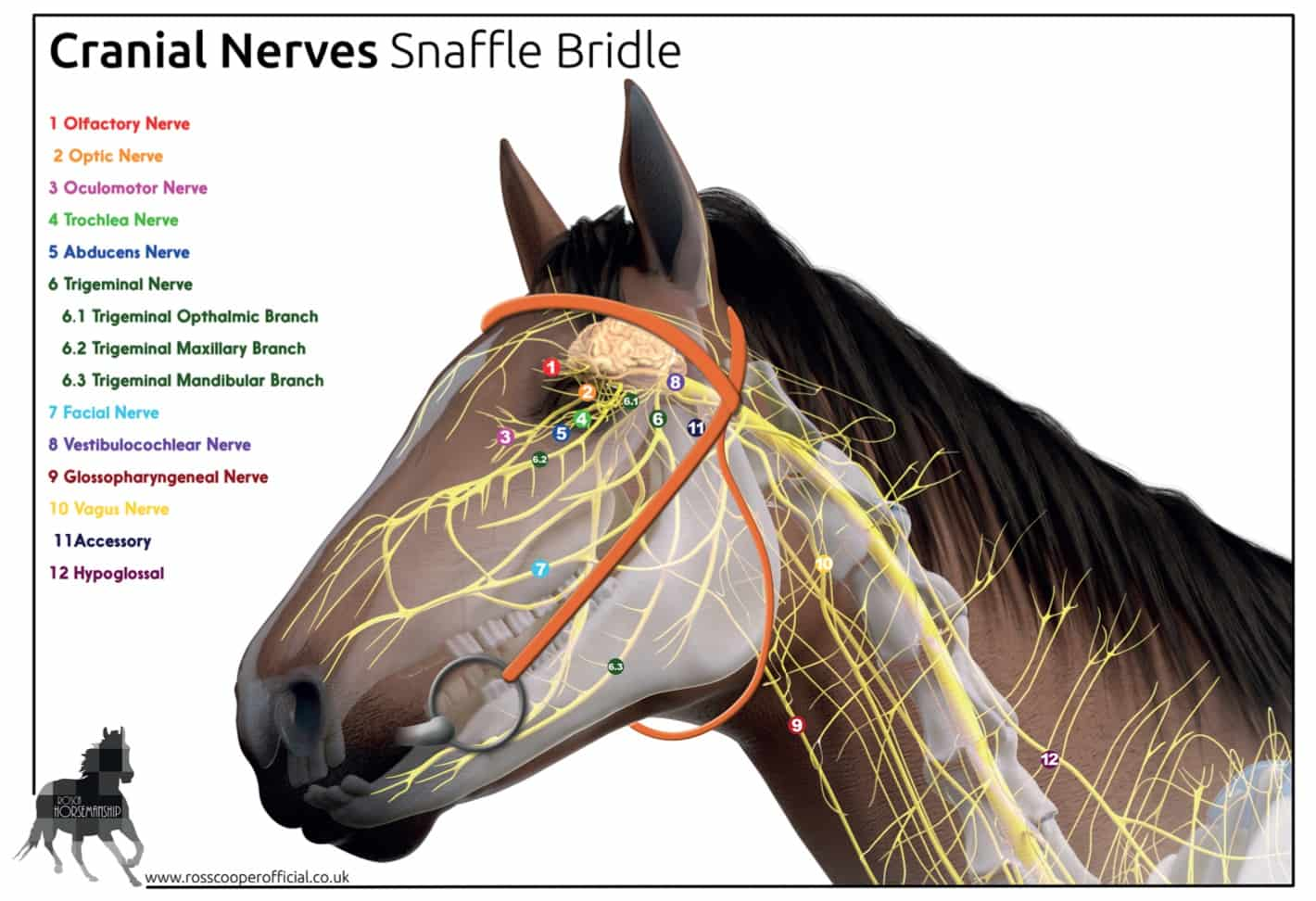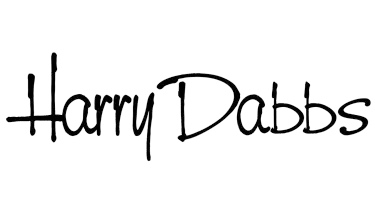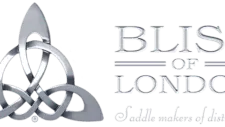Choosing the Right Bridle: Impact on Horse Behavior and Performance
Do you give any thought to your horse’s bridle and how the intricacies of fit can affect behaviour, performance and communication?
The bridle is an integral part of how we communicate with our horses, with a multitude of designs and materials on the market, providing longevity and better comfort for the horse. These are all factors to consider when selecting headwear for our horses.
Selecting a headstall for the bridle horse is vital to ensure equine performance and comfort and to aid maximum mutual communication. All too often, a bridle is purchased with minimal consideration for the design and fit. When assessing a bridle for fit, we need to select the most appropriately fitting headstall suited to the individual. This means we need to consider each individual horse’s unique facial structure and awareness of the ‘types’ within the breed. Over recent years, multiple breeds of horses have been sub-divided into specific categories, breeding for certain traits that excel within a discipline. This alters overall breed characteristics in many ways, including facial shape and structure; the same breed will no longer ensure standard breed-specific fit.
The head of the horse houses some of the most important aspects of the equine ability to function and is covered in a thin layer of skin, making a small selection of the 34 bones of the skull more prominent than others. This can give us a helpful indicator of anatomical placement. However, what is not visible is the intricate web of connective tissue, muscles, veins below the surface, and the nerves which stem directly from the brain sitting protected within the cranial cavity, which play a crucial role in bridal fit. As part of the peripheral nervous system, the cranial nerves come in 12 pairs, which then branch off into little networks of their own. All nerves relay to the brain and play a vital role in many sensory and motor functions, including sensory exchange (vision, taste, touch, hearing and smell), balance, facial movement, breathing and eating; all vital aspects of the equines ability to function.

A key player in the role of bridle fit is the Trigeminal Nerve. The root of the Trigeminal Nerve begins within the cranial cavity before dividing into three superficial branches; the ophthalmic, maxillary and mandibular. These branches exit through four holes in the skull known as ‘foramen’. Due to the branches pathway, the close proximity to the skin’s surface and the location of the foramen, this is the main nerve to be affected by poor bridle fit alongside the Facial nerve and Glossopharyngeal. Many horses experience discomfort in their training due to an ill-fitting headstall which can dramatically affect both behaviour and performance.
Many bridle designs do not have a sympathetic fit in mind; they do not allow for sufficient subtle adjustments to be made for adaptability. Incorrect placement and contouring allow the bridle to sit directly on the highly sensitive areas of the horse’s face (be this fascia, soft tissue or nerves), causing excessive pressure, discomfort and pain. If left unchecked over time, a poor fit can cause the horse to experience loss of sensation and temporary paralysis in the face, which can eventually lead to permanent effects and nerve damage. It is important to note that even if a specific nerve is not directly affected, it can be subject to referred pain from another source.
We cannot avoid every nerve on the horse’s face, but we can increase our awareness, be mindful of the bridle we select and its placement, and educate ourselves on the correct fit for enhanced comfort. With no consideration of this, the horses’ welfare will indeed be compromised.
Crownpiece
The crownpiece runs over the poll behind the ears of the horse. As a significant piece of the bridle set-up, it serves to keep the rest of the bridle in place, connecting directly to the cheekpieces via buckle straps. When looking for an appropriately fitting crownpiece, it is crucial to ensure clearance of the caudal auricular muscles at the base of the ear and that it is not too tight. An overly tight headpiece places pressure on the poll and nuchal ligament, an area often affected by poor bridle fit. Clearance and a shaped crownpiece with appropriate padding (too much padding can increase pressure in this area) and surface area will give a comfortable fit, allow full movement of the ears, and reduce the pressure of a wider surface area.
Browband
To prevent the crownpiece of the bridle from sliding back down the neck, a browband can be added for stability, fitting around the forehead of the horse. The browband should have no uneven pressure or gaping around the forehead; it should lie below the base of the ears, not too far below, or above the split in a headpiece. It should contour the forehead, allowing the headpiece to sit comfortably behind the ears with no forward pull.
Cheekpieces
The cheekpieces are an extension of the crownpiece connected with buckles, though some are attached permanently. These extend down to the mouth where traditionally the bit would hang from, therefore playing a crucial role in communication, the stability of mouthpiece contact and paramount to the comfort of the bitted horse. Cheekpieces must be secure and have minimal movement, sitting below the facial crest, being mindful they are not too tight to dig into the sensitive skin and surrounding nerves. When selecting a bridle, look for cheekpieces with smaller distances between buckle holes. This will allow for subtle adjustments to fit the horse’s face.
Throatlash
The throatlash was designed to give the bridle stability, helping to prevent the bridle from slipping off of the horse’s face; it’s not unusual for western tack not to have a throatlatch. A tight throatlash can interfere with breathing, even more so in a hyper-flexed state. To ensure bridle security and equine comfort, there should be a four-finger space between the throatlash and the jaw.
Noseband
Here, we reference the classic cavesson noseband, not facial restraints that affect the horses’ ability to open their mouths, such as the flash or grackle. The cavesson is now a common addition to the bridle for cosmetic purposes; this is valuable for lead-rein ponies. A correctly fitting noseband should sit 2 to 3 fingers below the facial crest and above the start of the soft nasal cartilage, though this may vary on individual conformation. Incorrectly fitting nosebands are one of the top causes of bridle pain, due to the pressure they exert on the infraorbital nerve that leaves the infraorbital foreman, part of the maxillary branch of the Trigeminal nerve, below the facial crests. There should be at least 2 fingers fit between the nose and the noseband, ensuring it is not too tight. This enables the horse to work his mouth and relax the jaw.
Bit Fit
The bit sits on the hangers of the cheekpiece on the snaffle bridle. It is crucial that the correct bit is used and fitted, just as a saddle and a bridle would be, considering mouth conformation (pallet, teeth, tongue, lips), level of experience and rider ability. The bit, against popular belief, should be seated comfortably in the corners of the horse’s mouth with no wrinkles present; the presence of wrinkles is contradictory to softness and indicates the presence of pressure that the horse will find uncomfortable. With pressure already present, the rider will need to apply further contact pressure to engage a response. Incorrect bit placement can add to downward pressure on the headpiece, alter the angle of the cheek pieces, and cause tension within the jaw. Combined with a tight noseband, this sufficiently compromises the horse’s comfort and performance.
Buckles
Buckles, often made of metal, vary in size, shape and design. If placed incorrectly, they can dig into the skin’s surface, sit on protruding bones and rotate inwards towards the eye. A small buckle with smooth edging is best positioned in line with the horse’s eye or sitting mid-way down the horse’s cheek.
Symptoms of an ill-fitting bridle:
- Reluctance to bridle
- Head rubbing
- Head tossing
- Hesitation to move forward
- Head shy
- Glazed eyes and sullen appearance
- Loss of facial movement
- Ruffled hair, rub marks or sores
- Unbalanced or restricted movement
- Rearing, Bucking
A change in any behaviour needs to be addressed – consider adding a Bridle Fit to your next Saddle Check or Fit
Also have a look at our Jeffries range of Premium Gentle Bridles
SOURCE: HORSEMANSHIP JOURNAL




